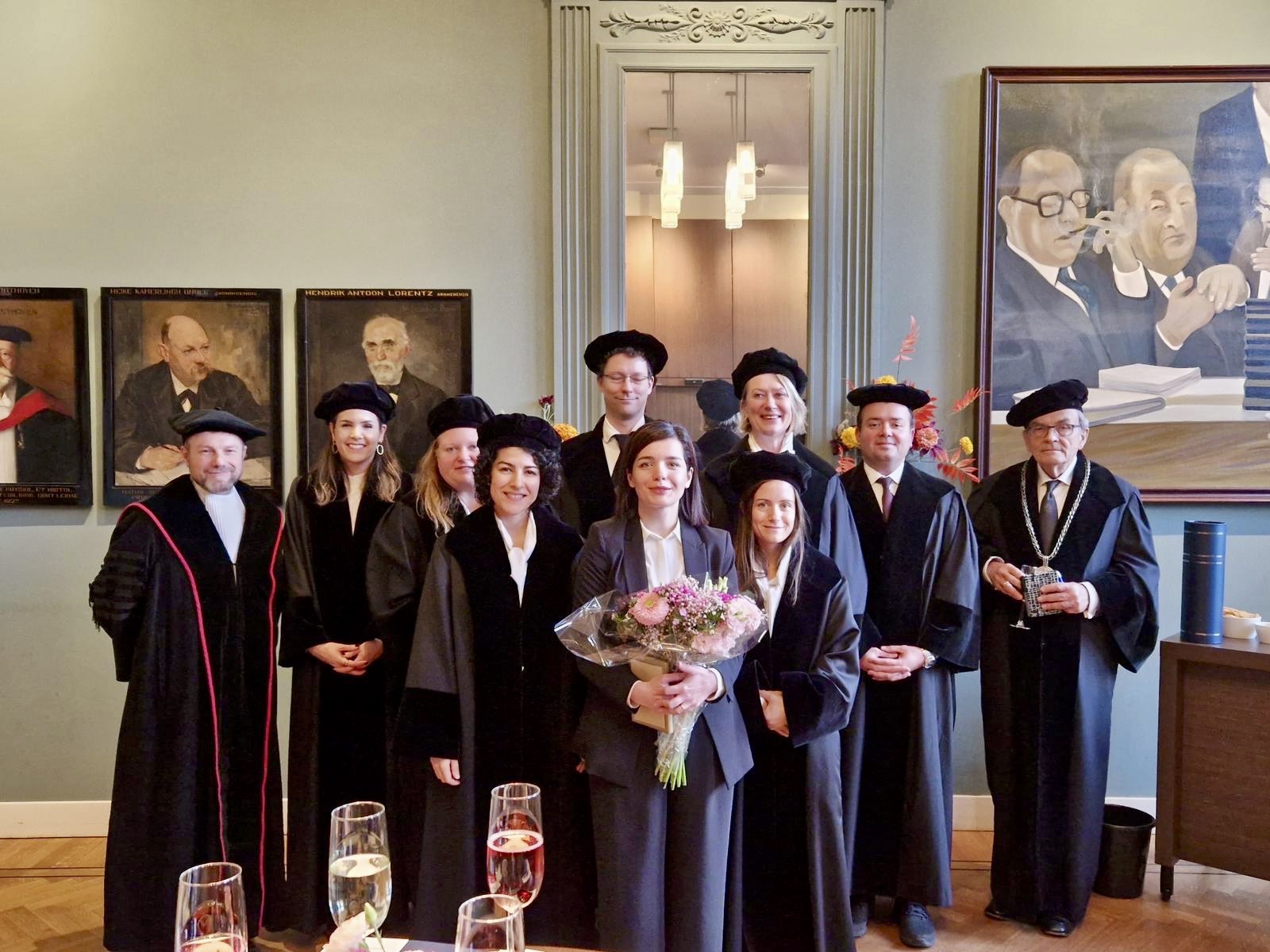
How AI and wearable technology help create more inclusive environments for children
Can we reshape school playgrounds through data and design? By using AI and wearable sensors, data scientist Maedeh Nasri discovered ways to create environments where children, including those with ADHD and autism, can connect, play, and grow.
What inspired you to focus on understanding children's behavior on playgrounds?
'Because of my background in engineering, I have always been enthusiastic about using technology to solve real-world problems. In the playground context, it is extremely crucial to understand children's behavior in its physical, social, and cultural contexts. Thus, using modern sensing technologies to capture all these interconnected contexts became essential. This has motivated me to focus on understanding children's behaviors in playgrounds and bring my technical background to this research.’

More about this project
On 3 December, Maedeh Nasri succesfully defended her PhD thesis A compass towards equity: a data analysis framework to capture children’s behaviour in the playground context. Her PhD was supervised by Carolien Rieffe, Mitra Baratchi (LIACS) and Alexander Koutamanis (Technical University of Delft) as part of the Inclusive School Environment project, a long-term study into the physical and social accessibility of schoolyards of the Focus on Emotions Lab.
Your research highlights the unique challenges faced by children with communication difficulties. Can you share some specific examples of these challenges and how your findings could help make playgrounds more inclusive?
‘For example, autistic children may be sensitive to stimuli such as loud noises, bright lights, or physical contact and may avoid crowded spaces. They often prefer repetitive activities like spinning and enjoy games with clear rules and routines. They may also find initiating or maintaining social interactions with other children challenging. Children with ADHD, on the other hand, often switch between activities during playtime and may have difficulty engaging in interactions with their peers.
My research suggests that setting inclusive policies and design elements can enhance playground equity for all children. For example, planning a timetable to allow different sub-groups of children to take turns using popular play structures may avoid creating overcrowded areas. Moreover, schoolyards could be divided into sub-areas, each marked with different colors and equipped with different play structures. Before breaks, children could select which colored area they prefer to play in. This system creates a balanced use of space, which benefits children who find crowded or noisy environments overwhelming.’
You've incorporated wearable sensing technology and AI into your research. How did these tools enhance your understanding of children's interactions?
‘Wearable sensors allowed us to capture data on locations, activities, and interaction patterns unobtrusively, consistently, and comprehensively. For example, we could map how often children engaged in group activities versus solid play and how environmental factors, e.g., play structures, influenced these interactions. Obtaining such a detailed picture of activities in the playground is difficult, if not impossible, by using only classical measures such as observation or self-reports. While our sensors enabled us to measure face-to-face interactions, the use of AI models in our research enabled us to go beyond face-to-face contacts and measure parallel plays and even more complex social interaction patterns from movement data.’
What were some of the challenges you encountered using these technologies?
‘Data privacy and parental consent were critical considerations—we carefully designed protocols to protect children's privacy and ensure ethical use of the data. Additionally, interpreting such complex data requires a multidisciplinary knowledge. This research has facilitated this need by creating a multidisciplinary team of psychologists, designers, policymakers, and computer scientists to ensure the relevance of the interpretations.’
How can your findings about playground environments—physical, social, and cultural - help designers and policymakers create better spaces for children?
‘This research provides a data analysis framework to capture children's playground behavior and can be used by designers and policymakers to observe children's behavior and identify the possibilities and limitations of playgrounds. This obtained knowledge enables designers and policymakers to design targeted interventions, e.g., designing a physical feature or implementing a new policy, to address the identified limitations. Afterwards, using this framework allows them to assess the impact of the interventions and evaluate its functionality in creating inclusive playgrounds.’
Have you seen any practical changes based on your research?
‘It might still be a bit early to see direct changes from my research, but I have already noticed a growing focus on equity and inclusivity in society. People are starting to think more about how to include everyone, especially in spaces like playgrounds. For example, more playgrounds are being designed to meet the needs of vulnerable children, such as those with physical disabilities or communication barriers. These playgrounds often have special features like quiet areas, and spaces where children can play safely without feeling overwhelmed.’
